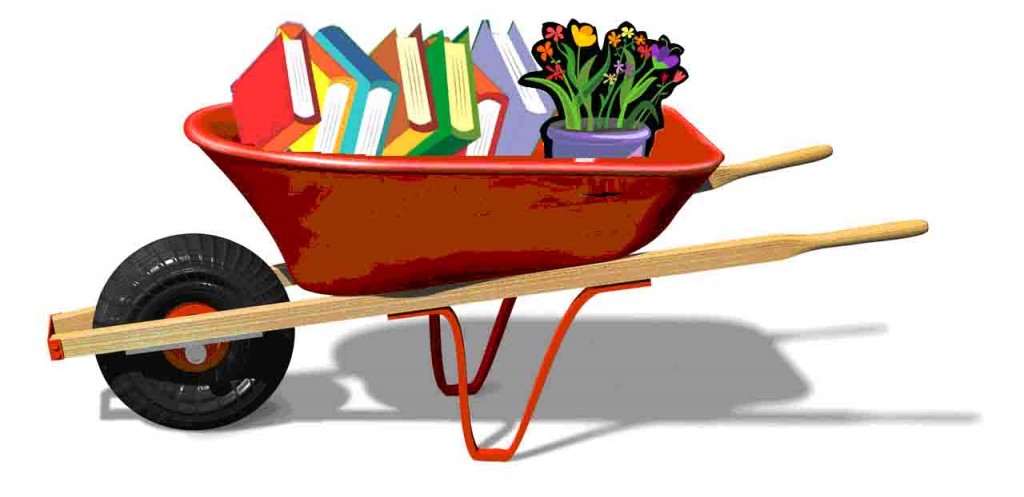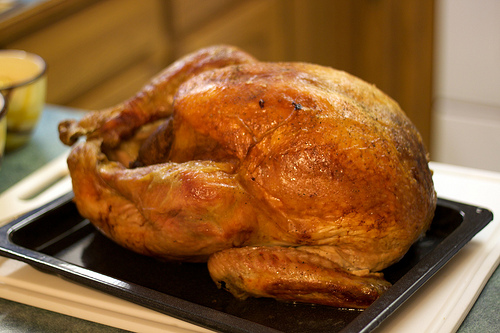By Pauline Zaldonis
Upon launching New York City’s citywide school garden initiative, Grow to Learn, Mayor Bloomberg declared, “nothing is more important than the health and wellbeing of our children. That’s why our Administration is committed to helping young New Yorkers understand how eating fresh food and preparing their own meals can help them lead longer, healthier lives.”[1] In New York City and across the country, government agencies and nonprofit organizations are framing school gardens as a tool for improving the health and wellbeing of schoolchildren. In California, the Department of Education started its Garden in Every School initiative in 1995, identifying gardening as a way to increase student preference for fresh fruits and vegetables.[2] Nationally, school gardens have received the support of First Lady Michelle Obama through her Let’s Move campaign, which promotes gardening as a way for children to get physical activity while learning how healthy food is produced.[3]
While it is clear that school gardens seek to address health and educational issues in schools, it is less clear whether school gardens can be used to address social justice issues in the school food arena. The food justice framework, which recognizes the importance of structural inequalities and patterns of oppression that characterize the food system, calls for solutions to food system problems that go beyond food access and education.[4] The increasing popularity of school gardens begs the question, how can we use gardens to promote greater justice in school cafeterias?
In the literature on the impact of school gardens, researchers and program evaluators typically praise school gardens for their educational and health benefits. Questions of food justice rarely arise, despite the fact that the nutritional quality of school food is generally poor and unquestionably a food justice issue. With an estimated 32% of youth between the ages of 2 and 19 considered overweight or obese,[5] an interest in the effect school meals on childhood obesity has been growing over the last decade. School food plays a large role in the development of children’s eating habits. What is on the menu in school cafeterias can lead to positive or negative health outcomes.
Fresh fruits and vegetables are hard to come by in many cafeterias across the United States today. Since processed foods tend to be cheaper and require less preparation than fresh fruits and vegetables, most school cafeterias in the United States are dominated by processed foods.[6] Students who participate in the free and reduced meals program are typically low-income students who rely on school meals to provide them with one and sometimes two meals each day. Consequently, the abundance of processed foods served in school cafeterias disproportionately harms low-income students. The West Harlem Environmental Action, Inc. (or, WE ACT for Environmental Justice), a community-based organization working towards racial and environmental justice in New York City, calls the lack of healthy school food options an issue of structural racism, claiming that the quality, safety, and nutrition of school meals has an especially large impact on students of color who are more likely to participate in the program.[7]
Despite the social justice issues surrounding school food, school garden advocates tend to focus on the educational and health outcomes associated with gardening, as if growing food and the consumption of food are unrelated. Indeed, school gardens have been linked to a variety of educational and health outcomes, for example, improved performance on standardized tests in reading, writing, math, social studies, and science.[8] They also provide children with greater exposure to complex natural experiences, which many believe to be important to childhood development.[9] Furthermore, student school gardening activities have been linked to higher nutritional knowledge, more positive attitudes about food and the environment, and an increase in the consumption of fruits and vegetables.[10]
Programs like New York City’s Grow to Learn program or California’s Garden in Every School initiative share the ambitious goal of providing every student with the opportunity to participate in school gardening. While the academic and certain health benefits associated with school gardens are documented, such outcomes are not necessarily synonymous with the promotion of food justice and they do not inherently address the root causes of problems like the rising childhood obesity or the proliferation of processed foods in school cafeterias. Even the few school gardens that address food access by providing enough produce to be incorporated into school meals do not necessarily address the systemic problems in the food system. By suggesting that food system inequalities can be addressed simply by educating people about how to make better dietary choices, the deeper problems that create inequalities in the food system are overlooked and obscured.[11]
A school’s ability to maintain a garden large enough to generate produce to be used in the cafeteria is contingent on its ability to access both financial and human resources, which is typically more of a challenge for schools in low-income areas. Many schools find it daunting to start and sustain even a small-scale educational garden, citing a limited staff time and lack of funds as the primary barriers. Students’ access to garden-based learning opportunities in their schools is dependent on the ability of their school administration’s ability to gain the necessary resources to build and maintain their garden.
Despite the goals of school garden organizations to create “a sustainable school garden in every public school,” realistically some schools will not get the benefits of a garden.[12] Simply addressing nutrition or incorporating gardening into traditional academic subjects does not increase food justice. Rather, school gardening initiatives seeking to increase social justice in the food system must extend their focus beyond nutrition and academics and perhaps focus on what is actually being served to students in their very own cafeterias.
The New York City-based nonprofit organization, Harlem Grown, is an example of a school garden initiative that goes beyond classroom-based nutrition. Harlem Grown works with local public schools to create greater access to nature and green spaces, engages community members in nutritional and outdoor activities, and increases access to healthy foods while focusing on issues of food justice.[13] Currently Harlem Grown works with PS 197 in Harlem, where it has developed a school garden and has created a vegetable-based diet in the school its cafeteria. Local restaurants purchase a portion of the produce from the garden while the rest of it is given to the school and made available for community members.[14] Harlem Grown uses school gardens to revitalize abandoned community spaces and to create sites that provide both educational opportunities and fresh produce. By taking food justice issues into consideration, the needs of the wider community are met as well.
With the increasing popularity and governmental support of school gardens, there is an opportunity for schools to engage their students in projects that both provide nutritional education while addressing food justice issues. In their essay on farm-to-school programs, Patricia Allen and Julie Guthman recognize the potential for schools to be the site for challenging the structural inequalities in the food system. They argue that the public school system has the potential to be a platform for innovative school food programs that combine the practical value of universal access to fresh food combined with educational and nutritional knowledge.[15] While most school gardens do not currently address issues of food justice, there is a huge potential for advocates to use school gardens as a platform for promoting food justice alongside the nutritional and educational benefits that are already widely recognized.
Pauline Zaldonis is a graduate student at The New School where she is pursuing her Master’s degree in Urban Policy and Management with a focus on food and the environment.
[1] “Message from the Mayor.” Grow to Learn. n.d. 13 May 2013. http://www.growtolearn.org/view/messagesfromnyc.
[2] “School Garden Program Overview.” California Department of Education. n.d. Web. 18 April 2013.http://www.cde.ca.gov/ls/nu/he/gardenoverview.asp.
[3] “School Garden Checklist.” Let’s Move. n.d. Web. 18 April 2013.http://www.letsmove.gov/school-garden-checklist.
[4] Allen, Patricia. “Mining for justice in the food system: perceptions, practices, and possibilities.” Agriculture and Human Values 25:157-161, 158.
[5] Perlman, Sharon E. et al. “A Menu for Health: Changes to New York City School Food, 2001-2011.” Journal of School Health; October 2012, Vol. 82, No. 10., 484-485, 484.
[6] “Why Processed Food is Cheaper than Healthier Options.” NPR. 1 March 2013. Web. http://www.npr.org/2013/03/01/173217143/why-process-food-is-cheaper-than-healthier-options.
[7] “Northern Manhattan Food Justice Initiative,” WE ACT for Environmental Justice, Accessed 3 May 2013, http://www.weact.org/Programs/EnvironmentalHealthCBPR/NorthernManhattanFoodJusticeInitiative/tabid/206/Default.aspx.
[8] Lieberman, Gerald A. and Linda L. Hoody. “Closing the Achievement Gap: Using the Environment as an Integrating Context for Learning.” State Education and Environment Roundtable, 1998.
[9] Blair, Dorothy. “The Child in the Garden: An Evaluative Review of the Benefits of School Gardening.” The Journal of Environmental Education. Winter 2009, Vol. 40, No. 2, 15-38, 17.
[10] Atkins, Dr. Robert and Veronica. “An Evaluation of the School Lunch Initiative.” Center for Weight and Health, University of California. Berkeley, September 2010, 26-32.
[11] Allen, Patricia and Julie Guthman. “Farm-to-School”: Neoliberalization from the Ground Up.” Agriculture and Human Values (2006) 23:401–415, 412.
[12] “Mission Statement.” Grow to Learn. n.d. 18 April 2013.http://www.growtolearn.org/view/mission_statement.
[13] “About Us.” Harlem Grown. n.d. 13 May 2013. http://www.harlemgrown.org/about-us/.
[14] Laperruque, Emma “Kids Yield Crops: In the Garden with Harlem Grown,” Marcus Samuelsson, 12 July 2012. Web. 16 April 2013.http://www.marcussamuelsson.com/food-stories-2/kids-yield-crops-in-the-garden-with-harlem-grown.
[15] Allen, Patricia and Julie Guthman. “Farm-to-School”: Neoliberalization from the Ground Up.” Agriculture and Human Values (2006) 23:401–415, 412.


